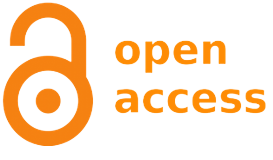<b>Body, educational thinking and praxis: “theory” and “practice” of Physical Education in the rise of modernitity</b> - DOI: 10.4025/actascihumansoc.v26i2.1390
Abstract
The aim of this work is to analyse historically how body is considered and educated in modernity. Considering the complex process of capitalism formation, this study aims to understand the contradictory ways of corporeal education regarding that historical moment. For that, in the first part, Montaigne, Rabelais and Locke's thoughts were observed, in order to verify how body renaissance occurs and the concerns associated to its education. In the second part of the study, as a conclusion, the article points out the historical concatenation between bourgeoisie educational "theory" and the "real practice" of that education offered to the rising working class. As such education took place at the same time and space, the purpose of this study is to discuss the simple approach which regards modernity univocally as the moment of the "body renaissance", verifying the existence of several contradictions that cannot be explained as a conscience limitation, but as historical parts which belong to a fast-developing process of social transformationDownloads
Download data is not yet available.
Published
2008-03-31
How to Cite
Herold Junior, C. (2008). <b>Body, educational thinking and praxis: “theory” and “practice” of Physical Education in the rise of modernitity</b> - DOI: 10.4025/actascihumansoc.v26i2.1390. Acta Scientiarum. Human and Social Sciences, 26(2), 221-230. https://doi.org/10.4025/actascihumansoc.v26i2.1390
Issue
Section
Education
DECLARATION OF ORIGINALITY AND COPYRIGHTS
I Declare that current article is original and has not been submitted for publication, in part or in whole, to any other national or international journal.
The copyrights belong exclusively to the authors. Published content is licensed under Creative Commons Attribution 4.0 (CC BY 4.0) guidelines, which allows sharing (copy and distribution of the material in any medium or format) and adaptation (remix, transform, and build upon the material) for any purpose, even commercially, under the terms of attribution.
Read this link for further information on how to use CC BY 4.0 properly.























